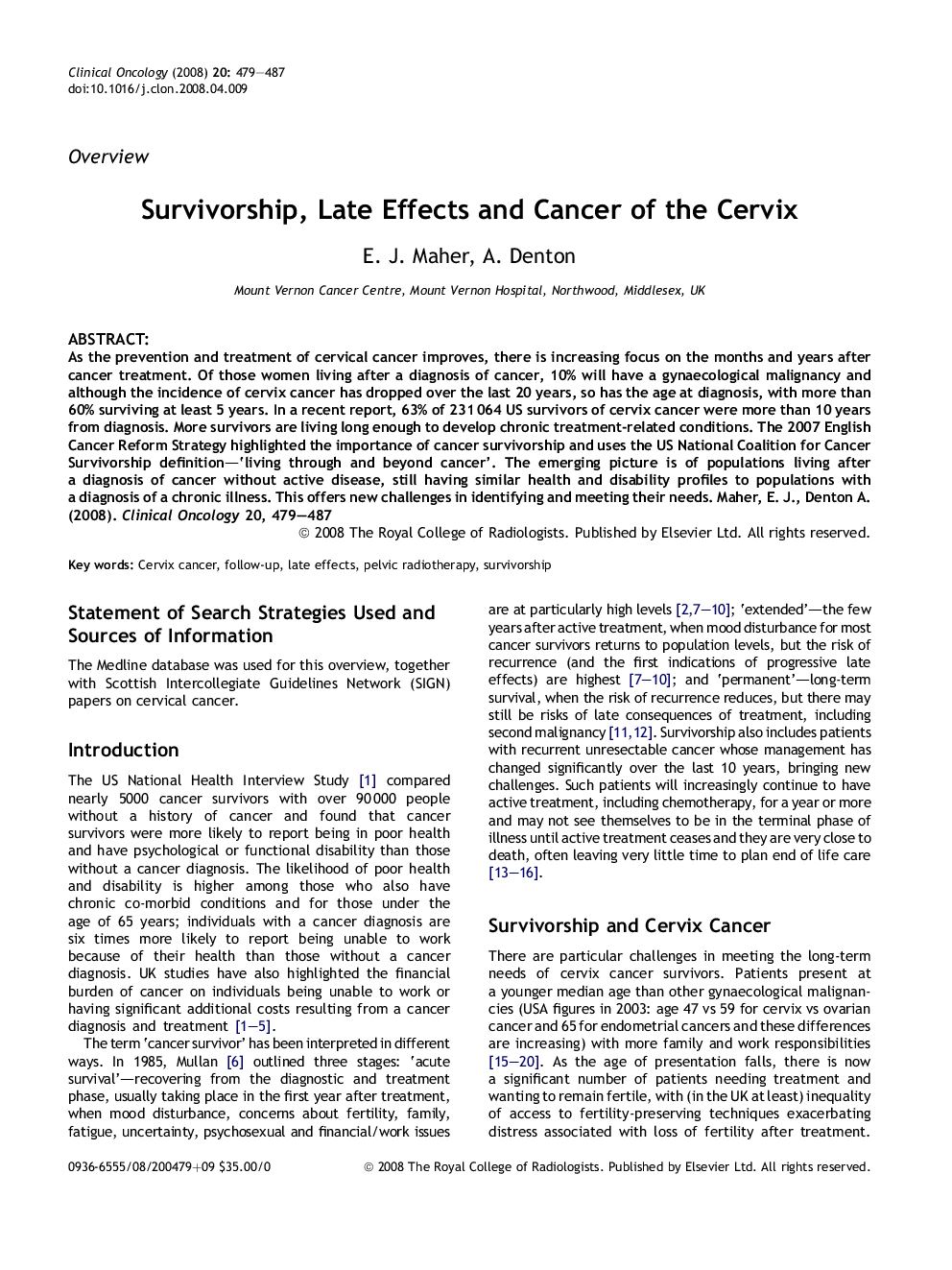| Article ID | Journal | Published Year | Pages | File Type |
|---|---|---|---|---|
| 5699811 | Clinical Oncology | 2008 | 9 Pages |
Abstract
As the prevention and treatment of cervical cancer improves, there is increasing focus on the months and years after cancer treatment. Of those women living after a diagnosis of cancer, 10% will have a gynaecological malignancy and although the incidence of cervix cancer has dropped over the last 20 years, so has the age at diagnosis, with more than 60% surviving at least 5 years. In a recent report, 63% of 231â064 US survivors of cervix cancer were more than 10 years from diagnosis. More survivors are living long enough to develop chronic treatment-related conditions. The 2007 English Cancer Reform Strategy highlighted the importance of cancer survivorship and uses the US National Coalition for Cancer Survivorship definition-'living through and beyond cancer'. The emerging picture is of populations living after a diagnosis of cancer without active disease, still having similar health and disability profiles to populations with a diagnosis of a chronic illness. This offers new challenges in identifying and meeting their needs.
Related Topics
Health Sciences
Medicine and Dentistry
Oncology
Authors
E.J. Maher, A. Denton,
